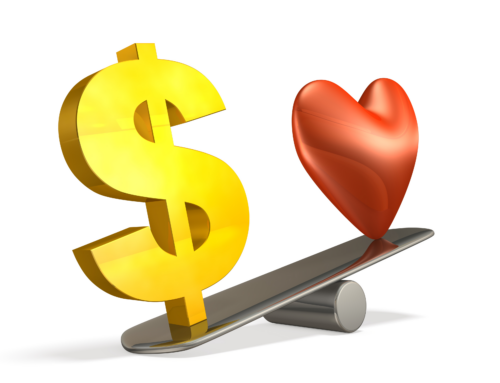 If you are a DIY kind of person in investing, you need to determine what criteria to use in evaluating choices. This is somewhat easier for individual stocks, but there are also yardsticks of various kinds for mutual funds.
If you are a DIY kind of person in investing, you need to determine what criteria to use in evaluating choices. This is somewhat easier for individual stocks, but there are also yardsticks of various kinds for mutual funds.
The Price to Earnings ratio (PE) is one of the most widely used. To determine it, just divide the stock’s price by the annual dollar amount of profit earned. If the stock in question has no profit yet, then the PE ratio is infinite. For example, Palo Alto Networks (symbol PANW) has moved from about $40 in November, 2013 to $147 and change on Tuesday, the 31st, obviously a great story.
Its total stock value is $12B, but it lost over $250M in the last year on revenue of $738M. But it grew sales at 53 percent in the last four quarters. It is expected to produce a profit by fiscal 2016. As a growth stock, investors are betting on its future and want to buy it now, hoping that it will be very profitable soon and its stock price will continue to soar. The current PE is not relevant to them.
Encana Corporation (ECA) represents the other end of the spectrum. With US energy in the pits from a presumably temporary supply glut, ECA is worth $8.1B and yet has produced $3.3B in profit in the last year. The stock price has fallen from almost $25 last summer to a paltry $11. So the current PE ratio is just under 2.4 now. Each dollar of earnings only costs $2.39 to purchase. Why so low? No one knows how long the oil and gas glut will last or how much the earnings will fall. The oil patch is littered with beaten up companies like this, a common condition in cyclical industries.
Price to Sales or P/S ratio is another commonly used benchmark to compare. I prefer it to the PE ratio as a more common sense indicator. Normally you would expect to pay no more than a few times the amount of annual gross revenue for most closely held small businesses. Encana for example is selling at 1.01 times its last reported 12 months of sales.
There are over 1300 companies reported to be valued by Mr. Market at one times revenue or less. That includes Honda (HMC) with a PS ratio of .58, very cheap by this measure, and New York & Co.(NWY), the clothing manufacturer, selling at less than 18 cents per dollar of revenue. The latter is also losing money—nothing is great just because it’s cheap.
The final scale for today is Return on Equity, ROE. It is the percentage obtained by dividing the company net worth into the net income. It measures how effectively a company is using its ownership or equity capital. The higher the percentage, the better the corporate management is using its resources.
These numbers run from extraordinary highs like 301 for Weight Watchers International (WTW) or 251 for Autozone (AZO) down to negative figures like a -123 for unprofitable Charter Communications (CHTR). In the interesting numbers category, Charter just announced it is buying Bright House Networks for $10.4B. Having come back from the dead in the past decade, Mr. Market values CHTR at $193 per share, $20.5B. Cable TV must be like farming—you don’t have to make a profit if you can manage the cash flow.
(Past performance is no guarantee of future results. Advice is intended to be general in nature. All data from Worden Brothers, Inc., TC2000 Service, 2015.)





